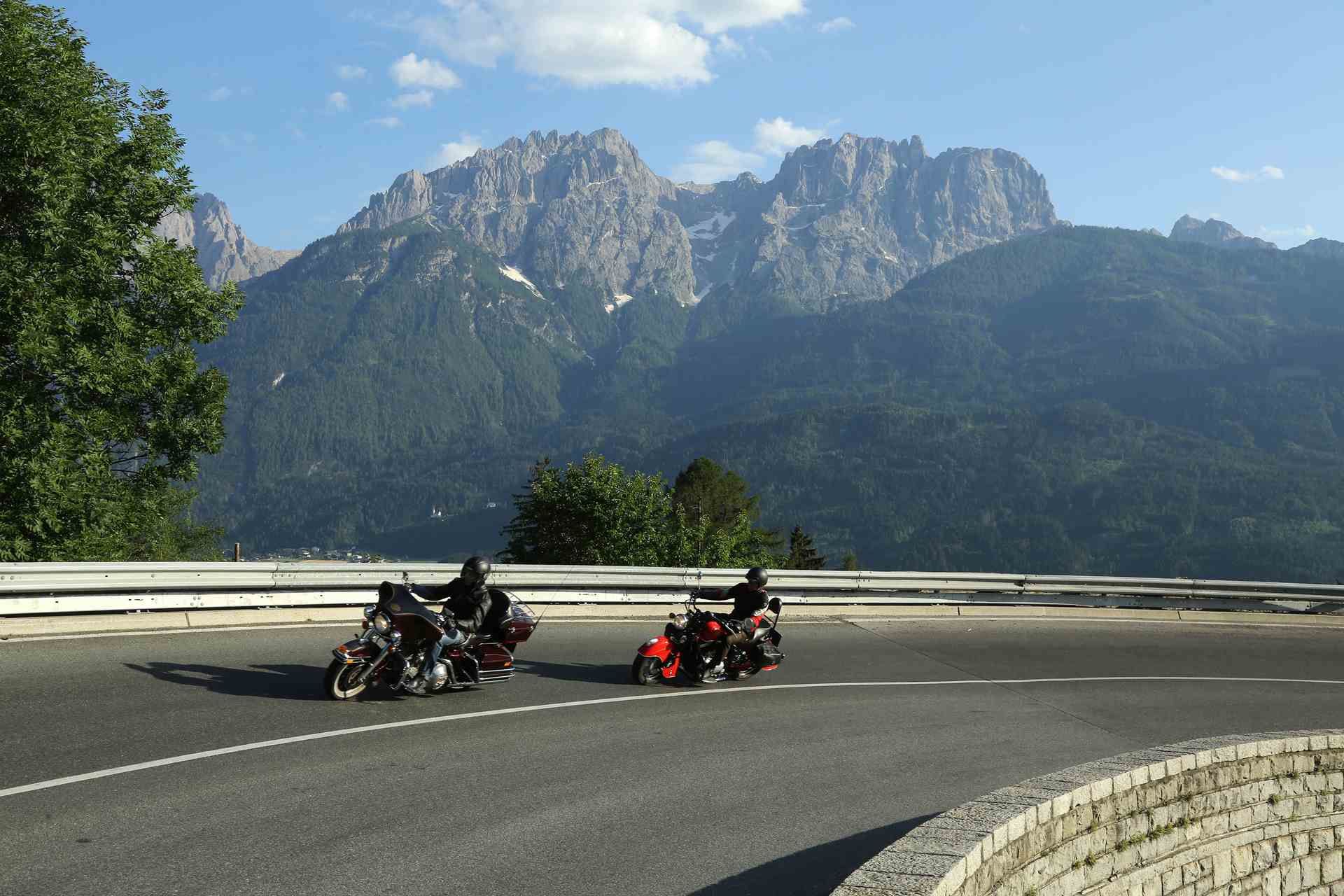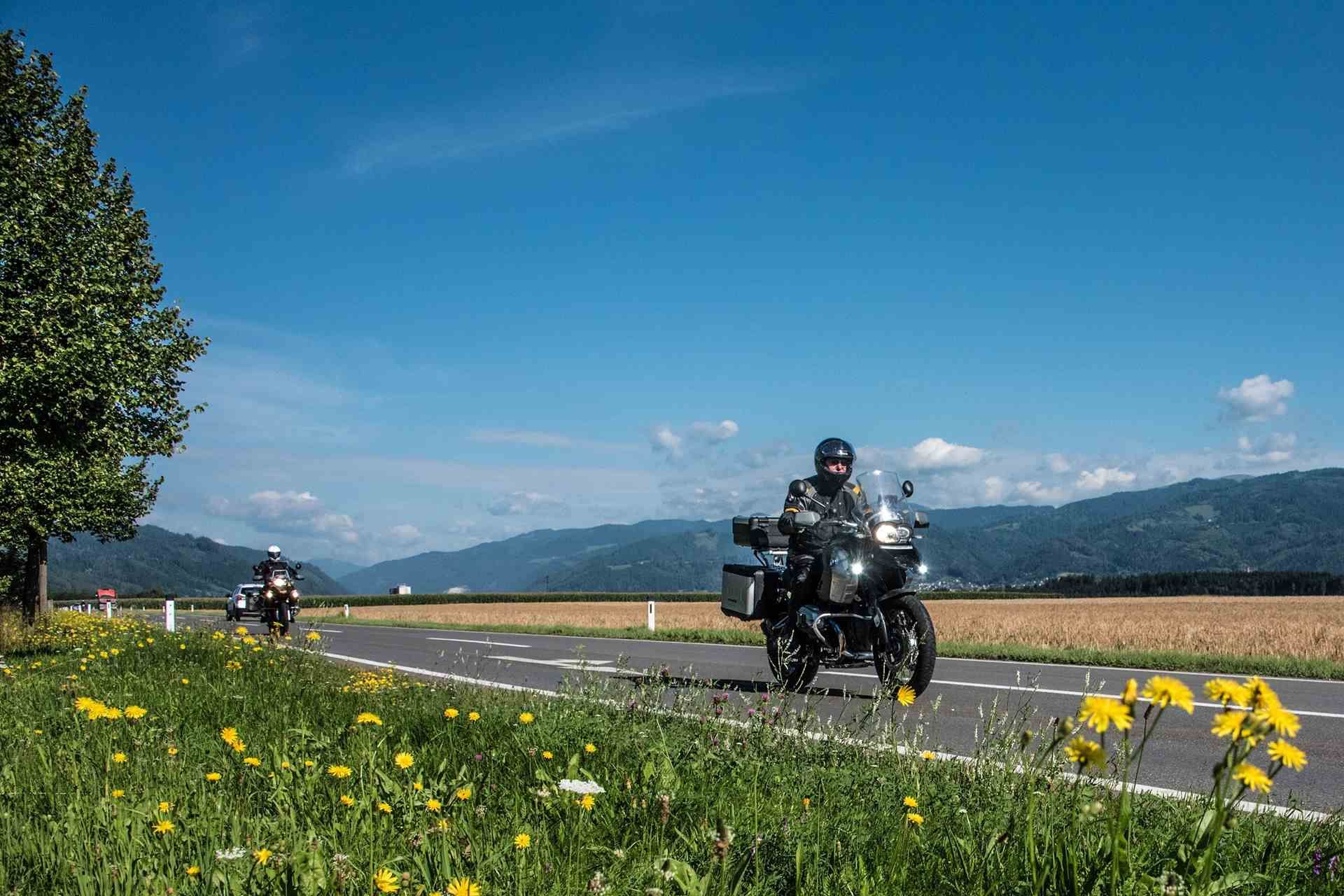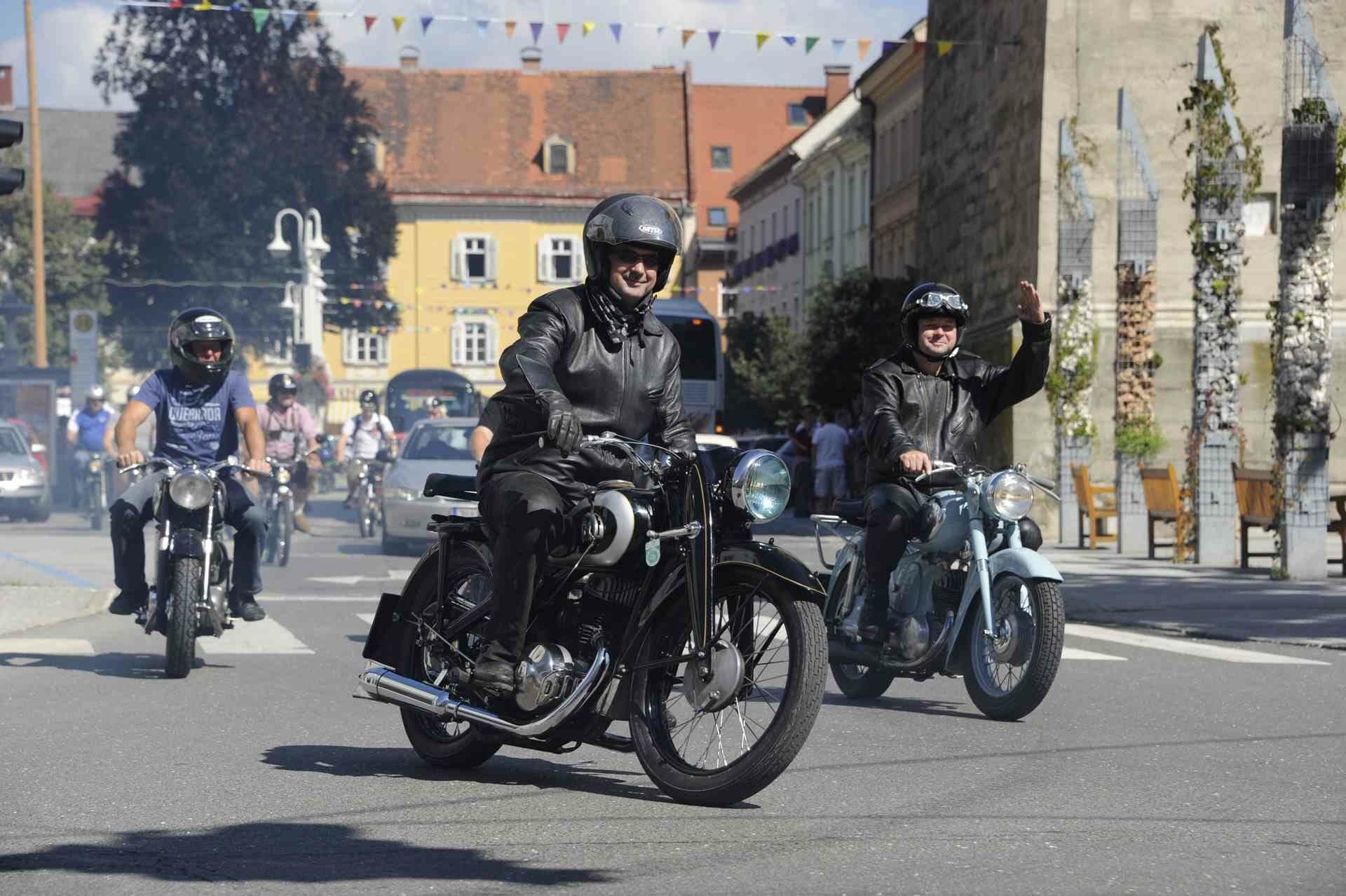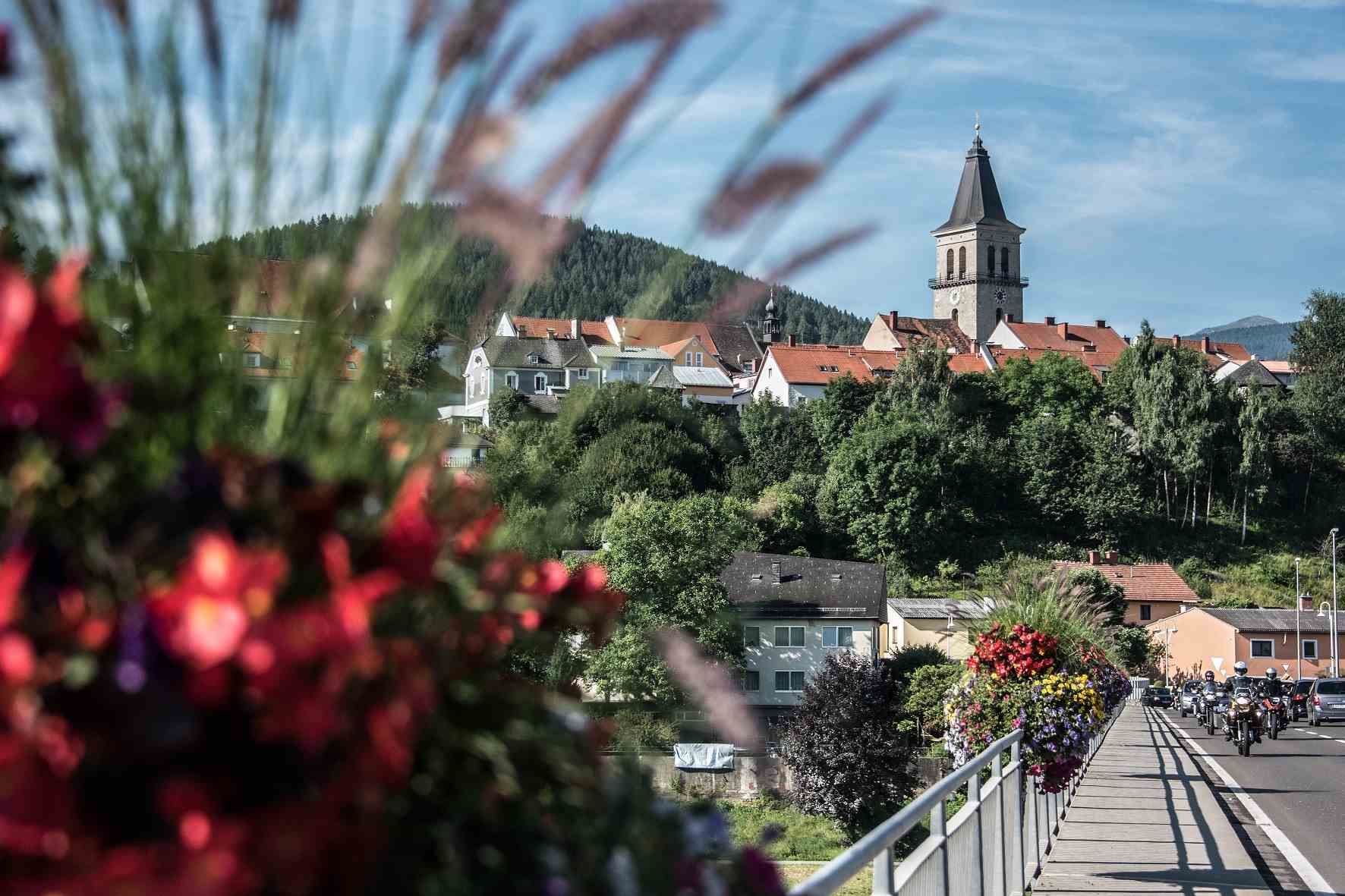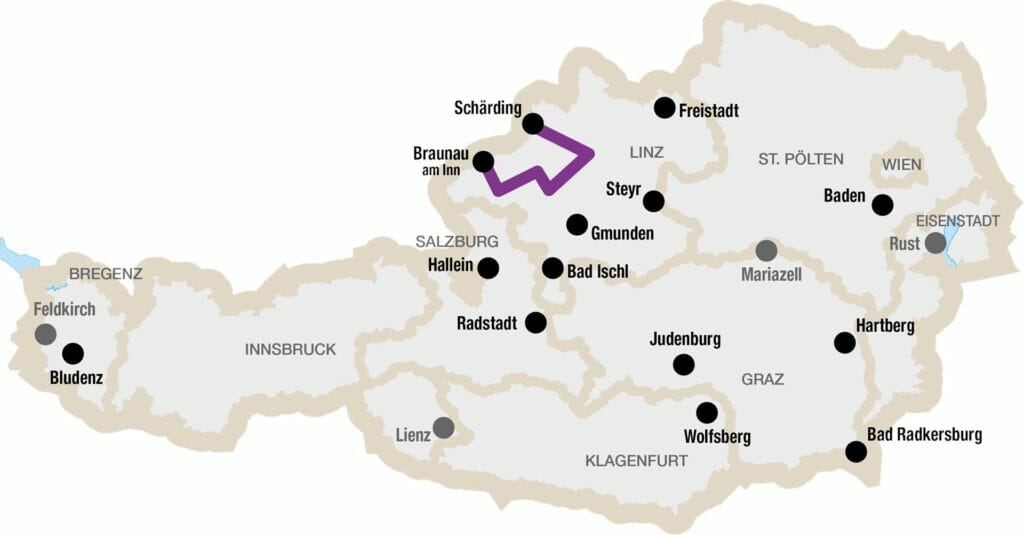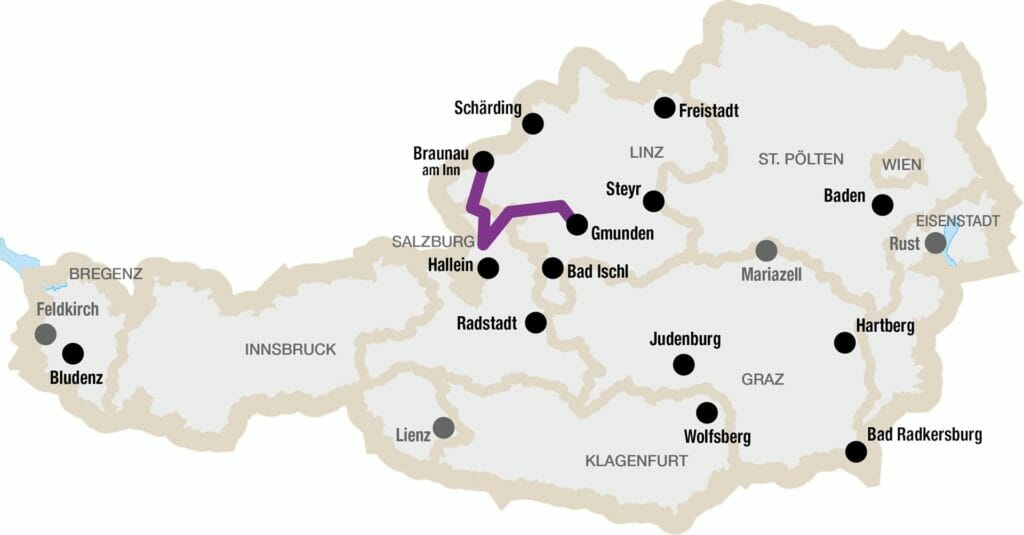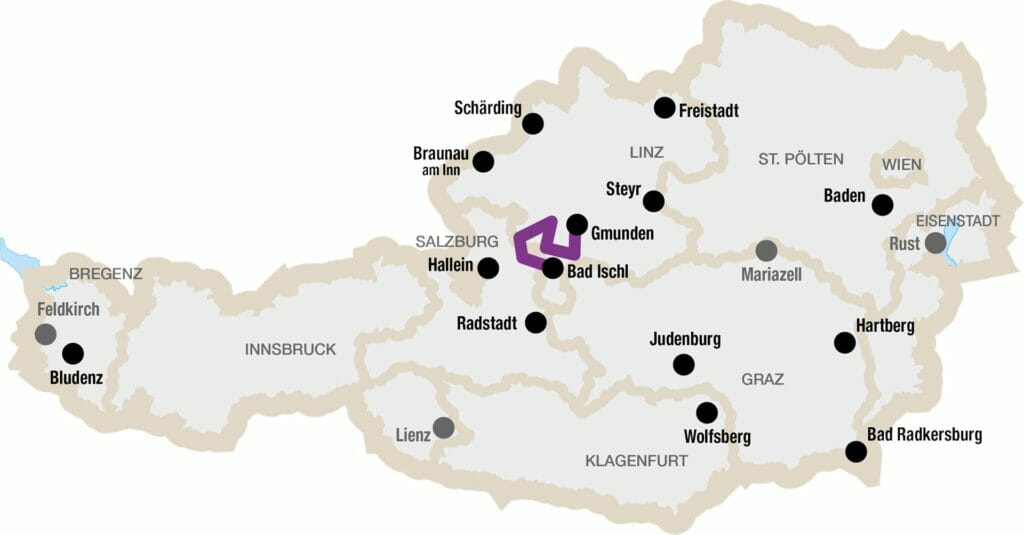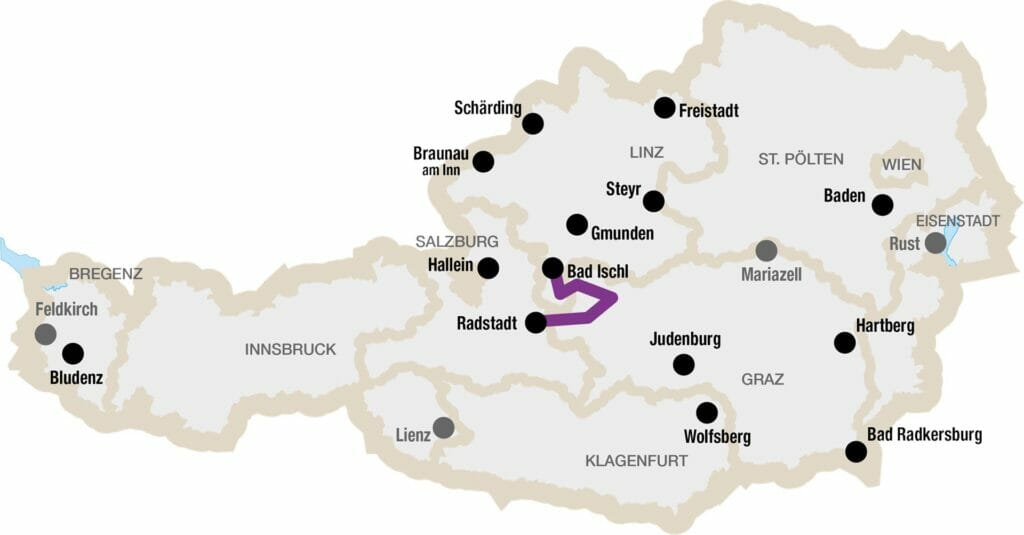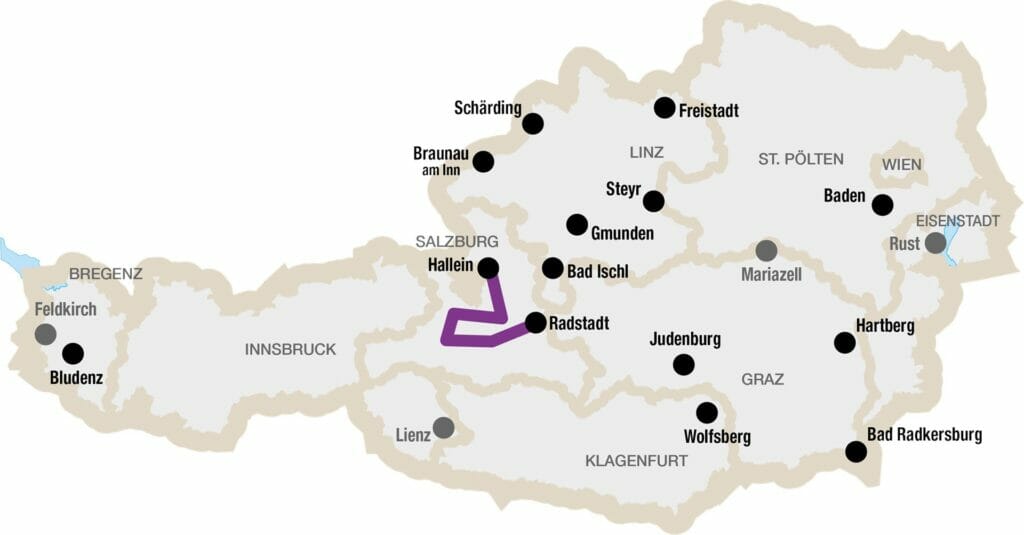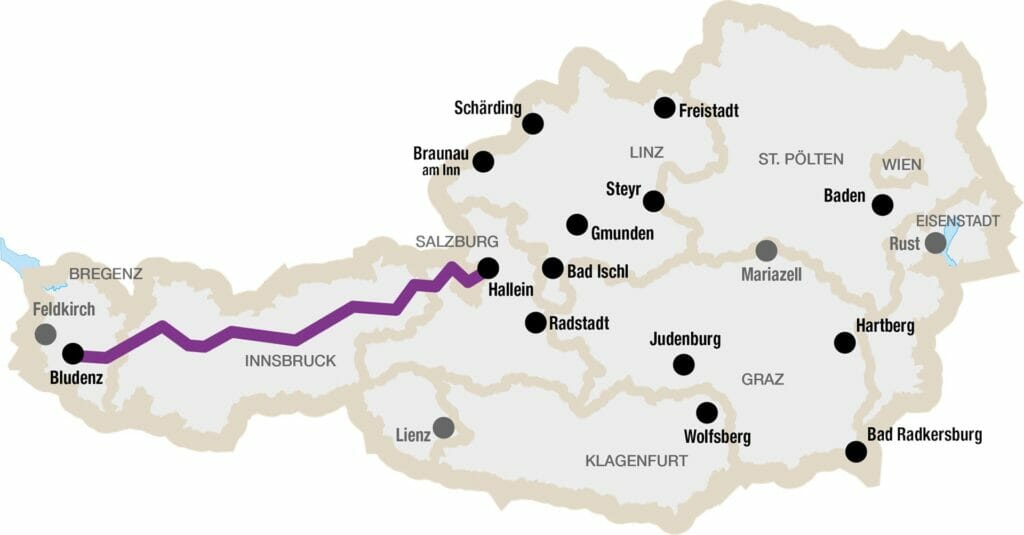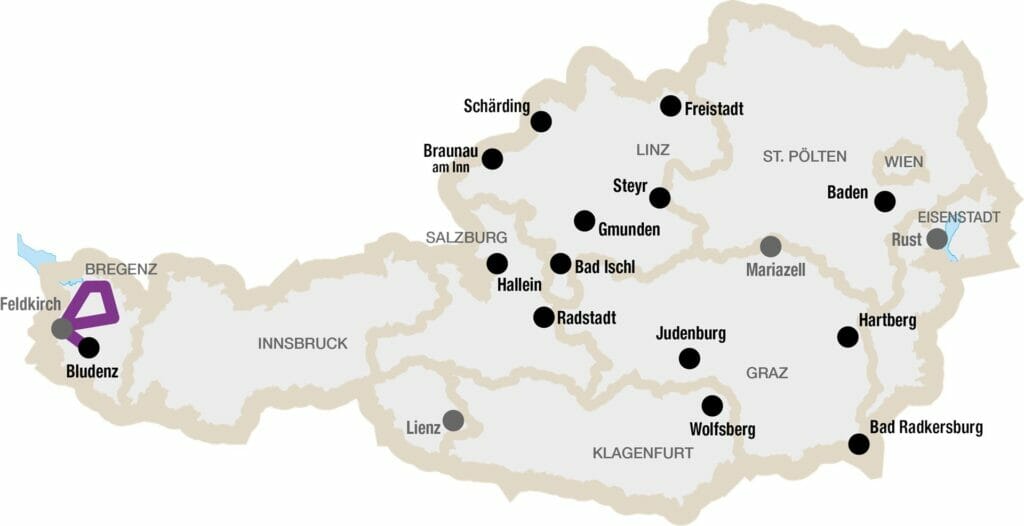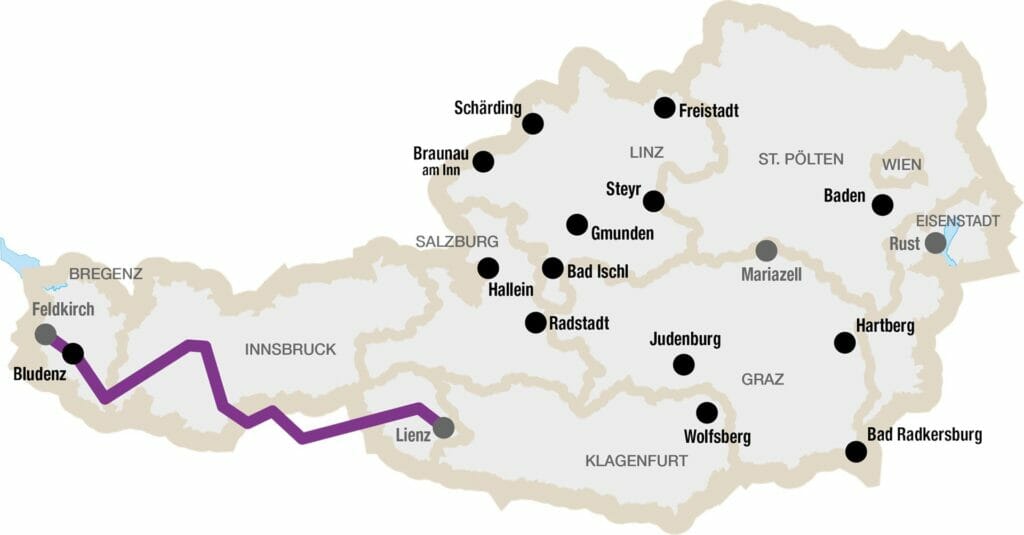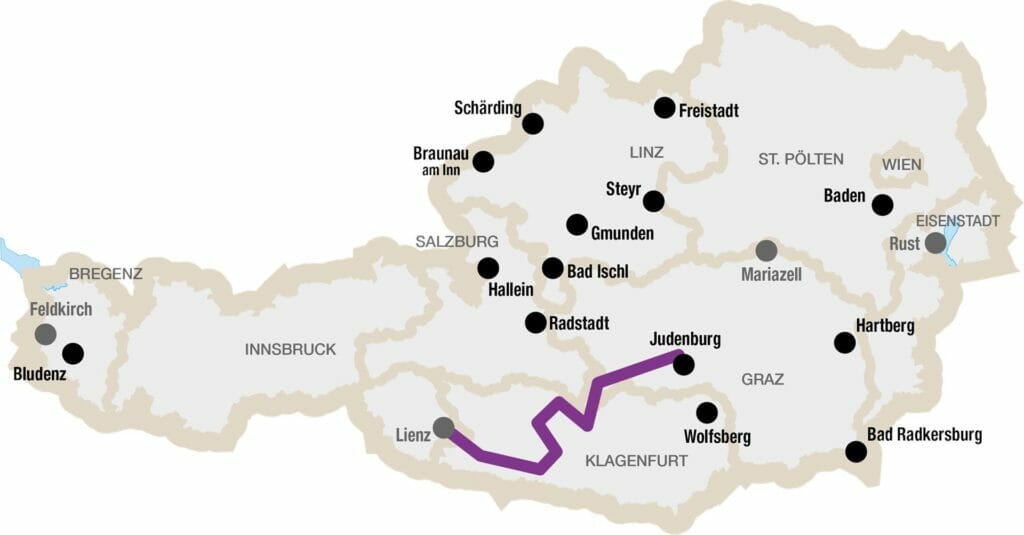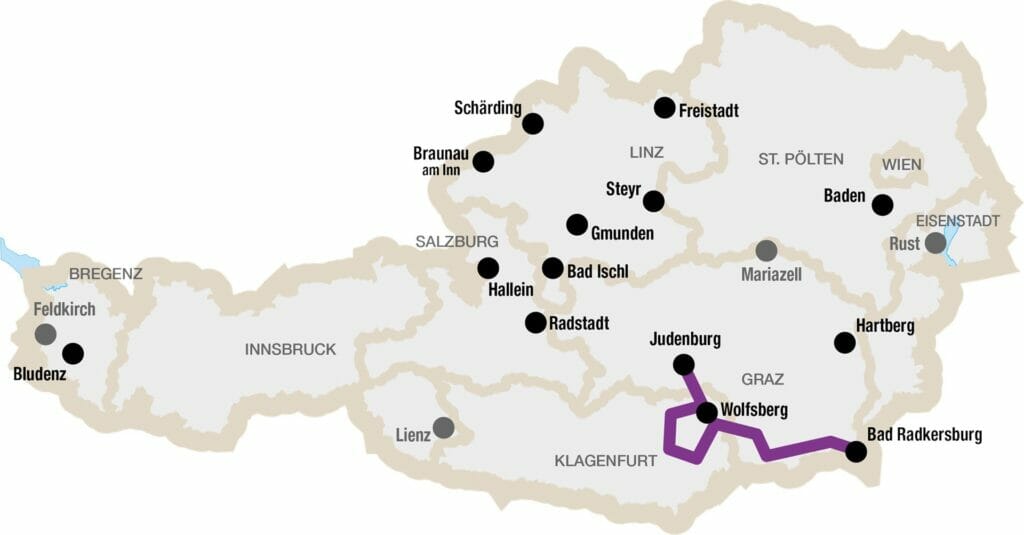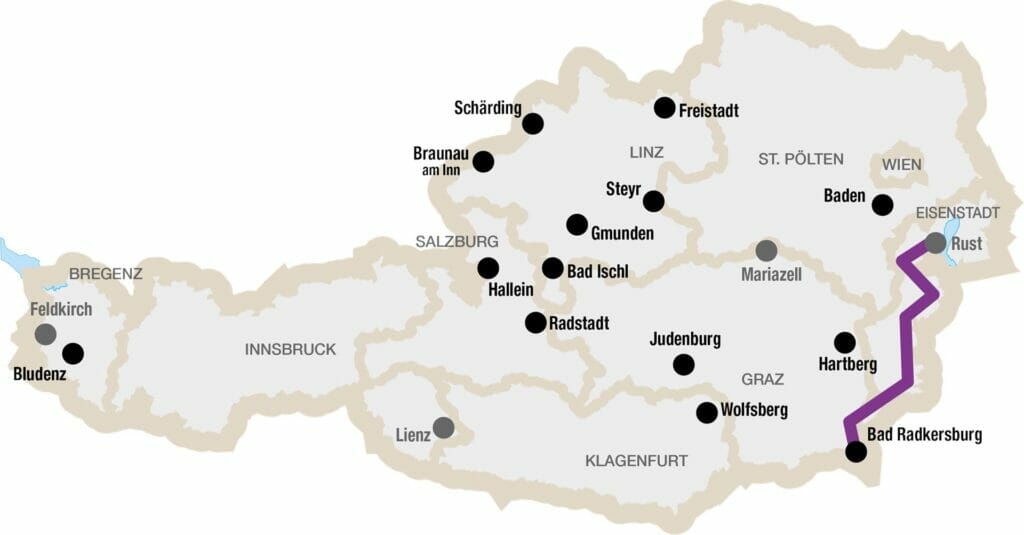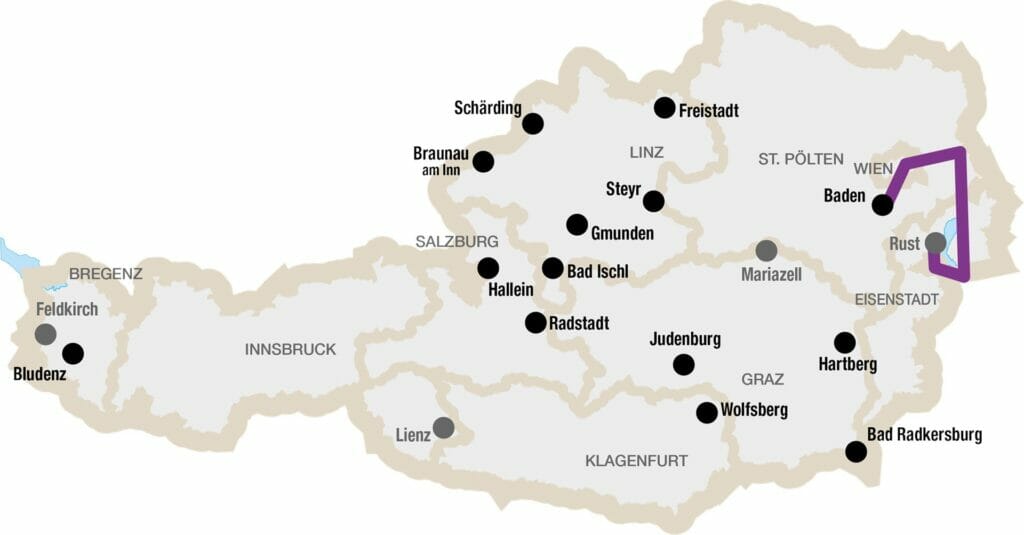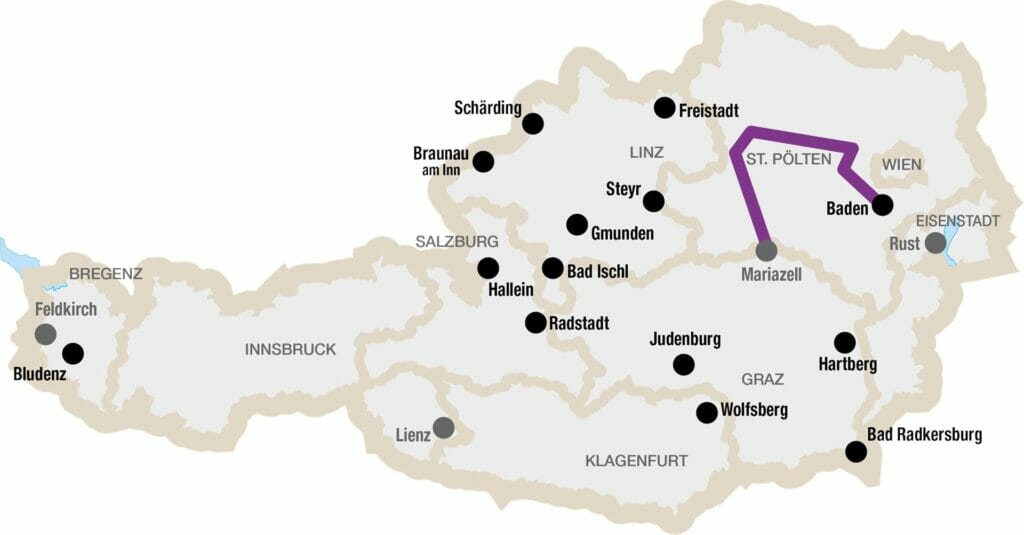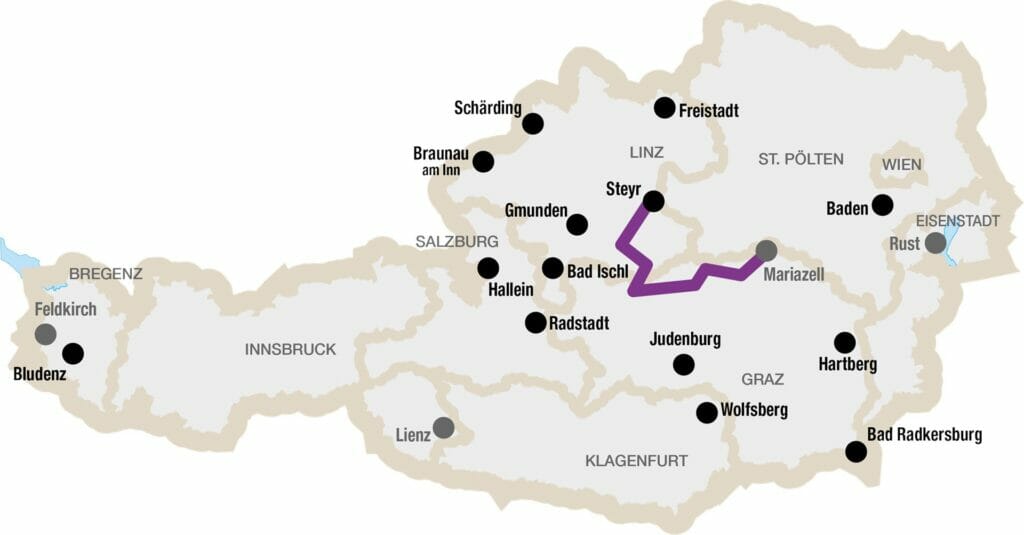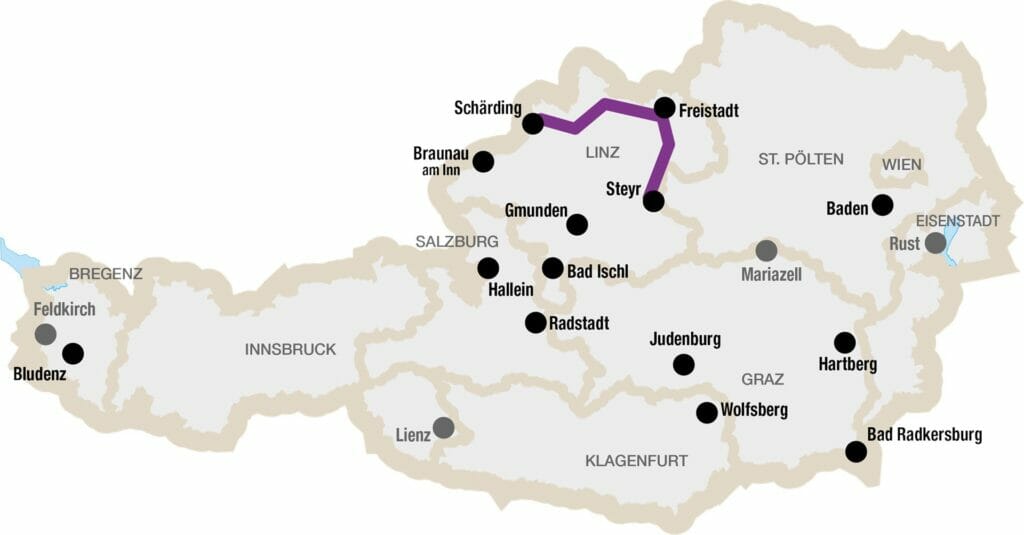It may take 80 days for you to travel around the world – to discover the most beautiful (motorcycle) routes through Austria you’ll only need 15. Whether in one go or in stages during a day or weekend tour, the 3,500-kilometre long Austria Classic tour leads through all nine provinces featuring the Small Historic Towns along the way.
The routes, prepared and tested by professionals, are subdivided into stages of 120 to 400 kilometres and ideally suited for both passionate bikers and less practiced motorcycle aficionados. Car drivers as well are sure to enjoy the drive for lots of cultural sights and culinary delicacies await you. The legs of the Austria classic tour often start and end in the idyllic town centres of the 16 member towns! Make the smart decision: take it easy and enjoy the ride!

Stage 1: Baroque & Beer – get your first taste of Austrian culture and beer brewing tradition
Schärding – Braunau
200 kilometres
Schärding – Haag am Hausruck – Ampflwang – Ried im Innkreis – Mattighofen – Braunau
Starting from the baroque town of Schärding, the route leads you through the Upper Austrian Inn and Hausruckviertel regions, over rolling hills and through small villages and intensively cultivated land to the Innviertel’s economic centre, Ried im Innkreis. In this area, the old beer brewing traditions are still very alive and active with 7 private breweries offering beer tastings where you can enjoy the various specialty brands of the region’s “amber nectar”.
Stage 2: Following in the tracks of tradesmen
Braunau – Gmunden
145 kilometres
Braunau –Mattsee – Obertrum am See – Salzburg – Straßwalchen – Vöcklabruck – Gmunden
DThe route leads through the western Innviertel region to three interconnected lakes, the Obertrumer See, Mattsee and Grabensee, crossing through on the narrow strip of moorland in between. The route’s highlight is the town of Salzburg – a UNESCO World Heritage Site and music and drama festival centre. From here, the route follows the B1 road, formerly the main connecting road to the country’s east, passing Straßwalchen and Vöcklabruck to ultimately arrive in Gmunden.
Stage 3: Pack your swim trunks – a trip through the Salzkammergut Lake District
Gmunden – Bad Ischl
135 kilometres
Gmunden – Ebensee- Weißenbach am Attersee – Seewalchen – Nußdorf – Mondsee – St. Gilgen – Bad Ischl
Cruising along the western shore of the Traunsee Lake you’ll arrive at the intersection leading into the Weißenbachtal Valley, which connects the Traunsee and Attersee Lakes. The route then takes you all around the Attersee Lake which in the summer can warm to 25° C, before leading on to the Mondsee Lake where prehistoric pile dwellings were discovered in the 1970s. The church in the town of Mondsee has become famous as the site of the wedding scene in the Hollywood film “Sound of Music”. Following the road along the western shore of the lake below the impressive rock wall of the Drachenwand, the route then leads over the Scharfling Pass to the Wolfgangsee Lake. The route’s final destination is Bad Ischl located at the heart of the Salzkammergut Lake District.
Stage 4: Along winding roads through fascinating landscapes
Bad Ischl – Radstadt
120 kilometres
Bad Ischl – Hallstatt – Obertraun – Bad Aussee – Bad Mitterndorf – Gröbming – Schladming – Radstadt
Leaving Bad Ischl southwards, the route leads you to the World Heritage site Hallstatt and then to Obertraun, where the Dachstein Ice Cave is an absolute must-see! A narrow and steep road through dense wood – with a gradient of up to 23% – leads you up to the Koppen Pass which marks the border between Upper Austria and Styria, then on to Bad Aussee. From there, the route which takes you halfway around the Dachstein Mountain Range continues on to Bad Mitterndorf, then to Gröbming and Schladming, venue of the 2013 Alpine World Ski Championships. In Mandling the route enters the province of Salzburg, continuing on to the alpine town of Radstadt, the route’s final destination.
Stage 5: High summits and curvy fun
Radstadt – Hallein
255 kilometres
Radstadt – Flachau – St. Johann im Pongau – Bruck an der Großglocknerstraße – Heiligenblut – Zell am See – Saalfelden – Dienten am Hochkönig – Bischofshofen – Going – Hallein
Today’s route leads through the beautiful Salzburg countryside up to Austria’s highest mountain, the Grossglockner. The tight switchbacks up to the Fuscher Törl, which offers a fascinating view of the Pasterze Glacier, are any biker’s dream come true! After returning to Zell am See, the route leads along a winding road via Dienten and Mühlbach to Bischofshofen, and after crossing the Gschütt Pass to Hallein, the final destination.
Stage 6: From the Salt Mine to the Milka cow
Hallein – Bludenz
350 kilometres
Hallein – Berchtesgaden – Lofer – St. Johann in Tirol – Kitzbühel – Wörgl – Schwaz – Innsbruck – Imst – Hahntennjoch – Warth – Arlbergpass – Bludenz
From Hallein, the route turns westward, briefly passing through Germany along the “Kleine Deutsche Eck”, before returning to Austria via the Steinpass. From Wörgl, the route runs almost parallel to the Inntal Motorway to Imst. The day’s highlight is the ride over the Hahntenjoch Pass – tight switchbacks and numerous twisting curves await you as you descend into the valley and cross the Arlberg Pass. Passing idyllic alpine villages the route ultimately arrives in Bludenz.
Stage 7: Through the Vorarlberg “Ländle” along the Road of Cheese
Bludenz – Feldkirch
160 kilometres
Bludenz – Sonntag – Faschina – Au – Mellau – Hittisau – Krumbach – Langen – Bregenz – Dornbirn – Hohenems – Feldkirch
This route explores the unique and characteristic landscape of the “Bregenzer Wald” Forest. A special challenge for man and machine is the ascent up the Furkajoch – the ride down to Damüls promises great fun to all who love switchbacks! Following the B200 road, also known as the “Bregenzer Wald Road of Cheese”, the route leads to the provincial capital of Bregenz, offering delightful views of lush green meadows along the way. Following the Rheintal Valley the route continues on to Dornbirn and Feldkirch.
Stage 8: Ulimited cruising
Feldkirch – Lienz
410 kilometres
Feldkirch – Bludenz – Silvretta Hochalpenstraße – Ischgl – Ötztal – Timmelsjoch – Jaufenpass – Sterzing – Bruneck – Staller Sattel – Lienz
The Austria Classic Tour’s longest route with impressive alpine passes and hundreds of bends! Its first highlight is the Silvretta High Alpine Road (toll) at the entrance into the Montafon Valley. The Bielerhöhe offers magnificent views of the impressive alpine scenery. Riding down into the Paznauntal Valley be beware of free ranging animals and their slippery “droppings”! After passing through the Ötztal Valley, the route climbs up to the Timmelsjoch, one of the oldest alpine passes leading down into Italy. The shortest connection between Sterzing and Meran is across the Jaufenpass. The route’s final destination is Lienz, easily accessible from Olang on the federal highway.
Stage 9: Up and down through fascinating landscapes
Lienz – Judenburg
275 kilometres
Lienz – Oberdrauburg – Kötschach-Mauthen – Hermagor – Spittal an der Drau – Gmünd – Nockalmstraße – Turracher Höhe – Predlitz-Turrach – Murau – Judenburg
From Lienz, the route leads to Oberdrauberg, then up impressive switchbacks to the Gailbergsattel, and continues along the Karnische Dolomitenstrasse Road to Sankt Stefan in the Gailtal Valley. From there the route climbs up to the Windische Höhe before continuing to Feistritz and Spittal/Drau. The Nockalmstrasse Road with its magnificent switchbacks crosses right through the National Park and takes you up to the Turracher Höhe. The descent to Murau and Judenburg also offers numerous bends that are sure to get your adrenalin going!
Stage 10: Twisting and turning through Styria‘s Tuscany
Judenburg – Bad Radkersburg
250 kilometres
Judenburg – Obdach – Bad St. Leonhard – Brückl – Griffen – Wolfsberg – Weinebene – Deutschlandsberg – Eibiswald – Leutschach – Straß – Bad Radkersburg
The route first climbs up to the Obdacher Sattel (1,000 m), then, passing Bad St. Leonhard, up to the Klippitztörl (1,642 m), before winding down into the valley to Brückl along the Löllingbach Stream. It then continues via Völkermarkt and Griffen to Wolfsberg and with numerous bends up to the “Weinebene”. From Deutschlandsberg, the route follows the Schilcherstrasse Road into the Styrian Tuscany, home to numerous beautiful vineyards within its rolling hills. The trip’s final destination is Bad Radkersburg on the Slovenian border.
Stage 11: Vineyards and biking fun
Bad Radkersburg – Rust
230 kilometres
Bad Radkersburg – Jennersdorf – Heiligenkreuz im Lafnitztal – Güssing – Schachendorf – Lockenhaus – Oberpullendorf – Markt Sankt Martin – Mattersburg – St. Margarethen – Rust
Today’s route highlights wine – following as many as five Wine Roads! These lead for the most part along largely unknown roads which yet unfold before you the typical characteristics of the region: Steppe, hills and Burgenland’s highest mountain (Geschriebenstein, 884 m) await discovery as well as diverse wines such as Uhudler and other wine specialties made of grapes that thrive in the region’s volcanic soil. The route’s final destination is Rust on the Neusiedlersee Lake.
Stage 12: Natural wonders in the National Park
Rust – Baden
205 kilometres
Rust – Sopron – Fertöd – Pamhagen – Podersdorf am See – Pachfurt – Petronell – Hainburg – Marchegg – Raasdorf – Wien – Wiener Neudorf – Baden
Today’s route though lacking mountains still has a great deal to offer both to nature and animal as well as culture lovers. From Rust, the route leads via Mörbisch to Sopron in Hungary before returning via Pamhagen back to Austria. The Neusiedler See National Park, home to numerous bird species native to the steppe, awaits you at Illmitz. Continuing on to Petronell and Hainburg, you’ll arrive at the Donau Auen National Park. From Marchfeld, the route continues on to Baden, past Vienna and through various small villages dotted with delightful wine taverns.
Stage 13: Wine, woods, mountains, apricots and God
Baden – Mariazell
260 kilometres
Baden – Alland – Neulengbach – Tulln – Zwentendorf – Krems – Spitz – Ottenschlag – Ybbs an der Donau – Wieselburg – Scheibbs – Mariazell
From Baden, the route winds through the Vienna Woods to Eichgraben, then continues to the Flower Town of Tulln and on to Krems on the Danube River, the gate to the famous wine growing Wachau Region. Following the road along the Danube River you’ll re-cross the river at Ybbs. Near Wieselburg and Scheibbs the route, entering the Alpine Foothills, becomes twistier offering some curvy fun before arriving in Mariazell.
Stage 14: Trip through nature and technology
Mariazell – Steyr
200 kilometres
Mariazell – Gusswerk – Wildalpen – Hieflau – Admont – Liezen – Spital am Pyhrn – Windischgarsten – Steyr
This wonderful route winds through pristine nature and a national park, along river valleys and below steep rocky mountain cliffs. Turning southwards from Mariazell, it follows the Salza River until Hieflau and, after crossing the Gesäuse National Park, arrives at Admont, home to a beautiful Baroque Abbey. The route then continues along the Styrian Ennstal Valley to Liezen, before crossing the Phyrnpass toward Spittal am Phyrrn. Following the Steyr River the route ends in the 1000-year old town of Steyr.
Stage 15: Mühlviertel hills and typical Innviertel humour
Steyr – Schärding
185 kilometres
Steyr – Enns – Mauthausen – Hagenberg im Mühlkreis – Freistadt – Bad Leonfelden – Rohrbach in Oberösterreich – Niederranna – Engelhartszell – Münzkirchen – Schärding
Over gently rolling hills and along the delightful Danube Valley, the route leads across Upper Austria, primarily through the Mühlviertel and Innviertel regions. Turning northwards from Steyr, the route leads to Enns and, after crossing the Danube River, winds through the Mühlviertel hills via Freistadt and Bad Leonfelden to Rohrbach. Recrossing the Danube near Niederranna, the route continues upriver and passing Engelhartzell it ultimately arrives at the baroque town of Schärding.
